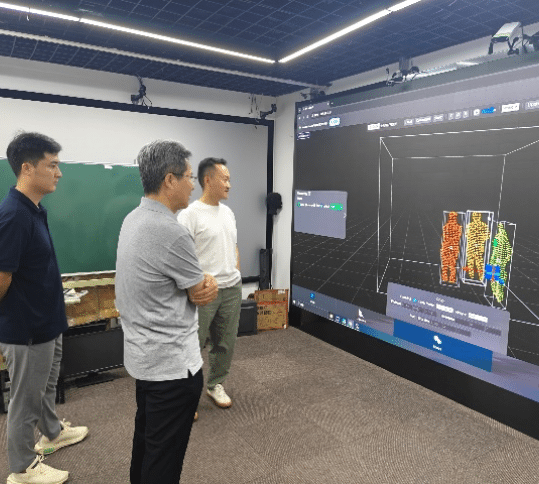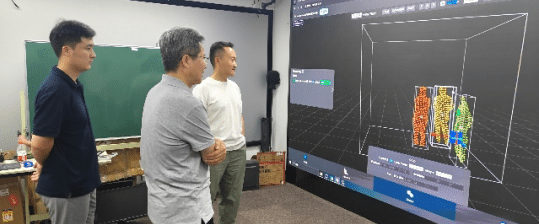Designing Engaging, Child-Friendly Immersive Spaces: The Role of Interactivity and Advanced Tracking Technology
The growing demand for immersive environments in education reflects a shift towards more engaging and interactive learning methods. These immersive spaces, powered by advanced tracking technologies, offer children the chance to learn through direct experience, sparking curiosity and fostering engagement. Designed for young audiences, immersive environments can transform traditional learning into a memorable, interactive journey.
In this article, we explore how immersive spaces like the one at the Optometry Center of Peking are changing educational experiences for children, delving into the technology behind these spaces and discussing practical design considerations for professionals interested in this field.
1. Understanding Immersive Spaces for Children’s Learning
What is an Immersive Space?
An immersive space is an environment that combines digital and physical elements to create an experience that feels both real and enveloping. For children, these spaces are designed to be intuitive, engaging, and accessible—meaning no headsets or wearables are required to participate.
Child-Friendly, Interactive Design
The design of a child-friendly immersive space focuses on interactivity without barriers. Here, children can walk in, explore freely, interact with various elements, and leave when they’re ready. The lack of wearables makes it easy for young users to engage naturally, without feeling encumbered by additional devices.
Project Spotlight: The Optometry Center of Peking
At the Optometry Center of Peking, Augmenta has implemented an immersive experience tailored to children. The design relies on tracking technology that follows each child’s position, allowing them to engage with interactive elements in real time. This setup is ideal for environments where children’s attention spans and sensory needs are a priority.
2. The Role of Augmenta Tracking Technology in Interactive Design
Augmenta’s tracking system powers the entire immersive setup, enabling a seamless and responsive experience that adapts to each child’s movements.


Key Components of Augmenta Tracking Technology
- System Origin Point: Establishes a central reference for tracking, ensuring accurate movement mapping within the space.
- Individual Tracking IDs: Each child is assigned a unique ID, which allows the system to track multiple users simultaneously without overlap.
- Relative Position Tracking: By continuously tracking each user’s location, the system responds with animations and other visual effects based on their movements.
Unreal Engine Support and Expandability
Augmenta’s integration with Unreal Engine enables the creation of high-quality, dynamic graphics that respond to real-time data. This setup is flexible, allowing the system to scale or expand with additional elements or features as needed, making it an ideal choice for evolving educational spaces.
3. Interactive Design Features and Real-Time Engagement
The experience uses participants’ positions to trigger animations, audio, scene changes, and more. This immersive approach centers on a first-person visual perspective. When the virtual camera’s view is aligned with the participant’s real line of sight, it creates an illusion of depth, which forms the core concept of the experience.

Animation triggers by proximity

Perspective effect from user detection
4. Technical Setup and Integration with Unreal Engine
Creating an immersive space requires seamless integration between tracking technology and visual output, and Augmenta makes this process efficient.
Setting Up Augmenta Tracking with Unreal Engine
- Configure Tracking Data: Define the origin point and configure Augmenta to provide tracking data that Unreal Engine can interpret.
- Output Protocol Setup: Define the necessary output protocols, IP addresses, and ports for data communication between Augmenta and Unreal.
- Activate Augmenta Plugin: Enable the Augmenta plugin in the Unreal Engine editor to ensure smooth data transfer.
- Real-Time Interaction with nDisplay: Unreal nDisplay enables multiple screens or projectors to render synchronized visuals, enhancing the immersive experience.
This streamlined process allows developers to connect tracking data with Unreal Engine quickly, minimizing setup time while maximizing interactivity.
5. Practical Benefits of Augmenta and Unreal Integration for Immersive Spaces
Efficient Deployment
Augmenta’s plug-and-play approach allows developers to set up immersive spaces efficiently, with ready-to-use equipment that simplifies installation and operation.
Ease of Content Creation
The Unreal Engine plugin further streamlines content creation. Using this plugin, developers can create animations and interactive features without complex configurations, ensuring that content can be easily updated or customized to suit different educational themes.
Interactive Zone Triggers and Perspective Effects
The tracking system allows for various interactive triggers based on zones. As children enter specific areas, animations or sounds can be triggered, creating a dynamic experience. Perspective effects also add a sense of depth, enhancing engagement by aligning visuals with each user’s movement.
6. Case Study: Implementation at the Optometry Center of Peking
Project Setup and Goals
Located at the Optometry Center of Peking, this immersive space is tailored to create an engaging and educational experience for children, fostering a sense of exploration and learning.
Technical Specifications
Key equipment includes portable servers and Femto Mega units. This setup ensures reliability and flexibility in a compact format, ideal for spaces where minimal setup is preferred.
Experience Design
The design leverages Augmenta’s tracking data to trigger animations and sound effects, with visuals powered by Unreal Engine, to create a memorable and intuitive experience for young visitors.
Conclusion: The Future of Interactive Immersive Spaces for Education
Immersive spaces designed with tracking technology and interactivity provide a unique, engaging way for children to learn and explore. With seamless integration from Augmenta and realistic visuals from Unreal Engine, these environments represent the future of interactive education.
For professionals in interactive design and education, this setup offers a model of how technology can be harnessed to create spaces that are both fun and educational, paving the way for a more immersive future in learning environments.
Credits
Location : Optometry Center of Peking, China
Managed by : Xiang Gao (高翔)
Equipment specifications : Portable servers + 2x Femto mega
Creative software : Unreal + ndisplay



